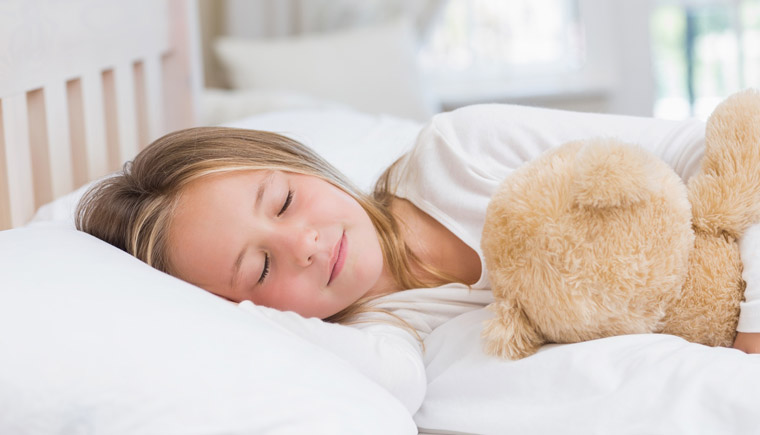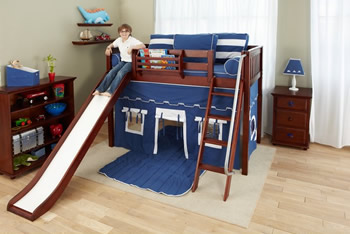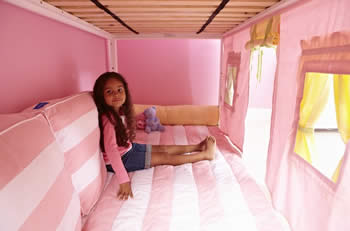Posted on 02/14/2016

According to the National Sleep Foundation, most adults need between 7 and 9 hours of sleep to function optimally, while children past the infant stage require 9 to 14 hours every 24 hours, depending on their age. Healthy sleep, however, includes more than simply the right quantity; it also requires some issues relating to quantity, which can be difficult to achieve. However, with the great impact that healthy sleep has on a child’s physical and intellectual development, it’s important for parents to do all they can to encourage healthy sleep.
What Is Healthy Sleep?
 Healthy sleep is difficult to measure, but it requires a combination of quantity and quality. While it isn’t the only factor involved in healthy sleep, the importance of getting a sufficient amount of sleep cannot be overstated. Healthy sleep also involves uninterrupted nighttime sleep as well as the right number and timing of naps, depending on the child’s age. It also requires that the sleep schedule remains constant and corresponds to the child’s internal clock, or natural biological rhythms.
Healthy sleep is difficult to measure, but it requires a combination of quantity and quality. While it isn’t the only factor involved in healthy sleep, the importance of getting a sufficient amount of sleep cannot be overstated. Healthy sleep also involves uninterrupted nighttime sleep as well as the right number and timing of naps, depending on the child’s age. It also requires that the sleep schedule remains constant and corresponds to the child’s internal clock, or natural biological rhythms.
What Does a Well-Rested Child Look Like?
Since the amount of sleep a person needs to function optimally varies both from person to person and throughout a person’s lifetime, the main way to determine whether someone is getting enough sleep can be determined by observing alertness. Optimal alertness is the mid-point between being groggy and hyper-alert. It’s “the state in which we are most receptive to and interactive with our environment, when we have the greatest attention span and can learn the most.” On the flip side, “altered states of alertness interfere with learning and behavior.”
What does an optimally alert child look like? Words such as “wide-eyed,” “calm,” “attentive,” and “pleasant” come to mind. Perhaps your child rarely exhibits that ideal combination. If so, learning and behavior problems likely accompany your child’s problematic state of alertness.
How Do Children Respond to Lack of Healthy Sleep?
 One of the most obvious immediate results of insufficient sleep is fatigue. Because children are more sensitive to many environmental factors, they can become fatigued after even minor sleep deprivation. A similar consideration is that children can easily become over-stimulated and fatigued, as a result of being awake for long periods of time, even if they aren’t physically active or engaged.
One of the most obvious immediate results of insufficient sleep is fatigue. Because children are more sensitive to many environmental factors, they can become fatigued after even minor sleep deprivation. A similar consideration is that children can easily become over-stimulated and fatigued, as a result of being awake for long periods of time, even if they aren’t physically active or engaged.
Most children respond to fatigue by fighting to remain alert and awake. Hormones, such as adrenaline, are secreted, leading to a hyper-alert state. As most parents know, this surge of energy is soon followed by exhausted irritability or a full-blown melt down. While overtired children desperately need sleep, their bodies often have trouble falling asleep. And once the sleep deprivation overrides the adrenaline, night awakenings are likely. What such a child needs is not to be allowed to stay up later, but to have an afternoon nap or earlier bed time, promoting sleep before fatigue sets in.
In Part 2 we’ll look at further implications of sleep deprivation as well as ways that parents can help their kids get healthy sleep.

From the Bedroom Source blog:
- One Bedroom, Two Kids, Many Options (Part 1)
- Helping Your Kids Prepare for STEM Careers, Part 1
- Maximize Effectiveness of Study Time with Memory Training & Tricks, Part 1
The Bedroom Source
Located near the Roosevelt Field Mall on Long Island, The Bedroom Source is your source for the best collection of children's and teen bedroom furniture. From flexibly configurable Maxtrix furniture to fashionable Smartstuff collections, The Bedroom Source offers high end furniture and professional design assistance to create the bedroom of your child's dreams.
Contact the friendly staff at The Bedroom Source by calling (516) 248-0600 or by submitting our online contact form. We're a local family owned mom & pop store. When you shop with us, you're dealing directly with the owners. We professionally assemble everything we sell. We deliver to Nassau, Suffolk, the 5 Boroughs, Southern Westchester, Southwestern Connecticut & Northern New Jersey.
Image credits: Top photo © WavebreakMediaMicro/Fotolia
